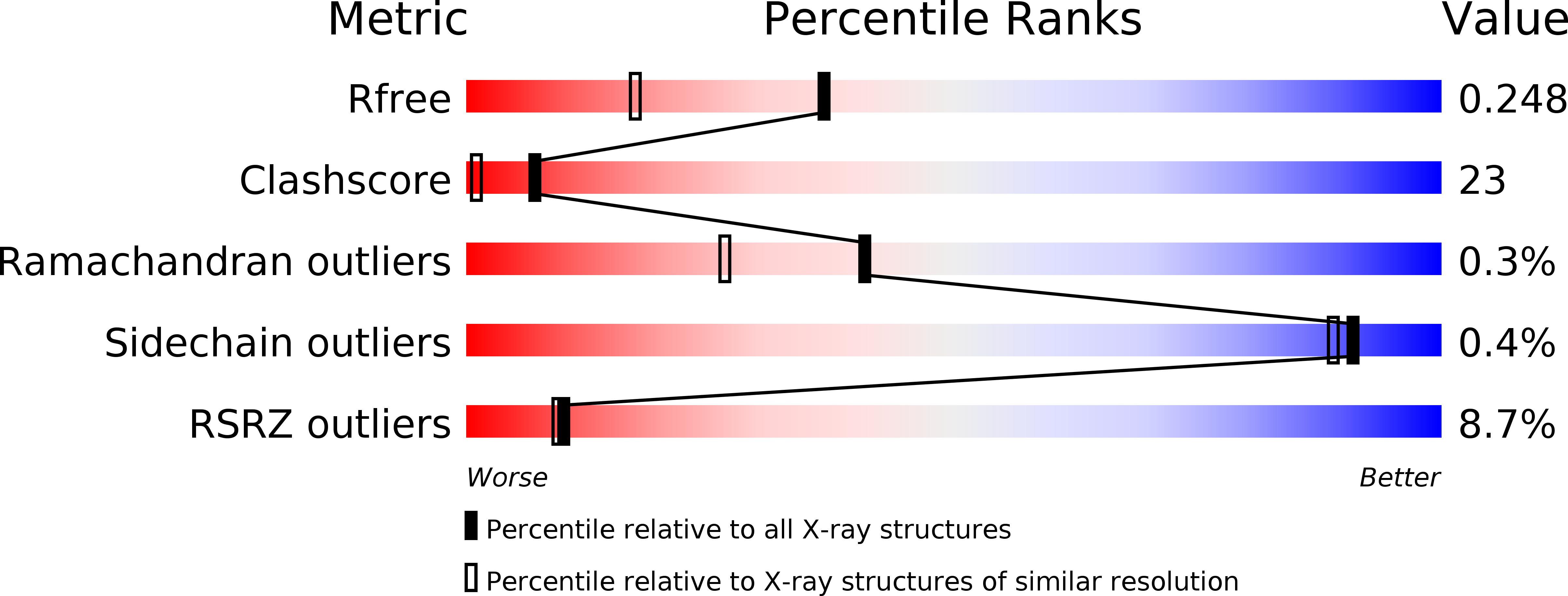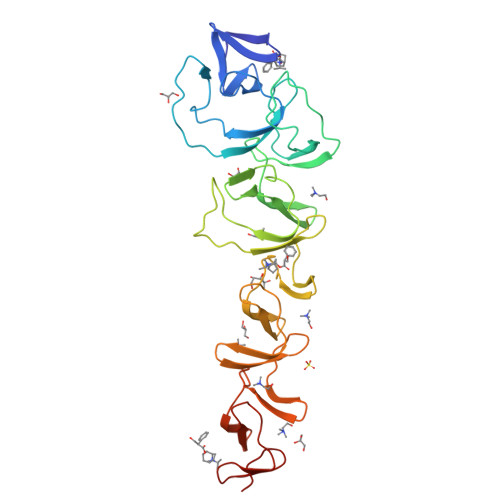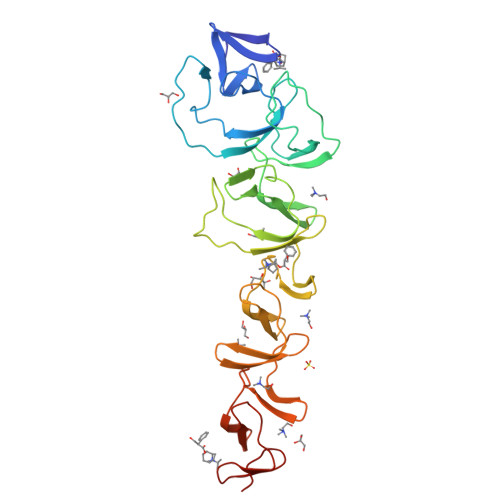Crystal Structures of Cbpf Complexed with Atropine and Ipratropium Reveal Clues for the Design of Novel Antimicrobials Against Streptococcus Pneumoniae.
Martin, N.S., Retamosa, M.G., Maestro, B., Bartual, S.G., Rodes, M.J., Garcia, P., Sanz, J.M., Hermoso, J.A.(2013) Biochim Biophys Acta 1840: 129
- PubMed: 24036328
- DOI: https://doi.org/10.1016/j.bbagen.2013.09.006
- Primary Citation of Related Structures:
2X8M, 2X8P - PubMed Abstract:
Streptococcus pneumoniae is a major pathogen responsible of important diseases worldwide such as pneumonia and meningitis. An increasing resistance level hampers the use of currently available antibiotics to treat pneumococcal diseases. Consequently, it is desirable to find new targets for the development of novel antimicrobial drugs to treat pneumococcal infections. Surface choline-binding proteins (CBPs) are essential in bacterial physiology and infectivity. In this sense, esters of bicyclic amines (EBAs) such as atropine and ipratropium have been previously described to act as choline analogs and effectively compete with teichoic acids on binding to CBPs, consequently preventing in vitro pneumococcal growth, altering cell morphology and reducing cell viability. With the aim of gaining a deeper insight into the structural determinants of the strong interaction between CBPs and EBAs, the three-dimensional structures of choline-binding protein F (CbpF), one of the most abundant proteins in the pneumococcal cell wall, complexed with atropine and ipratropium, have been obtained. The choline analogs bound both to the carboxy-terminal module, involved in cell wall binding, and, unexpectedly, also to the amino-terminal module, that possesses a regulatory role in pneumococcal autolysis. Analysis of the complexes confirmed the importance of the tropic acid moiety of the EBAs on the strength of the binding, through π-π interactions with aromatic residues in the binding site. These results represent the first example describing the molecular basis of the inhibition of CBPs by EBA molecules and pave the way for the development of new generations of antipneumococcal drugs.
Organizational Affiliation:
Departamento de Cristalografía y Biología Estructural, Instituto de Química-Física 'Rocasolano', Consejo Superior de Investigaciones Científicas, Serrano 119, 28006 Madrid, Spain.






















